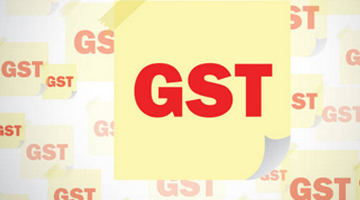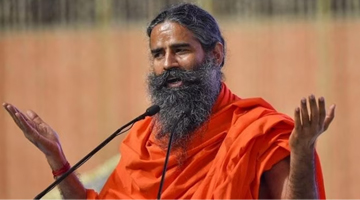NIPFP Paper Sheds New Light GST Compliance Gaps
By TIOL News Service
NEW DELHI, MARCH 15, 2020: A Working Paper (WP) from National Institute of Public Finance and Policy (NIPFP) has found alarming gap in compliance by goods and service tax (GST) payers in filing returns, raising concern about revenue growth and tax evasion at the State levels.
WP concluded that the highest GST evasion (in terms of total GST collection from the state) is reported in Goa. Bihar, Maharashtra, Madhya Pradesh and Chhattisgarh have relatively higher GST evasion as compared to other major states. On average 3.13 percent of total GST collection during August 2017 to December 2019 is evaded for major states.
Among minor states, Mizoram is reported the highest GST evasion and it is followed by Delhi. On average 5.41 percent of total GST collection during August 2017 to December 2019 is evaded.
According to WP dated 11th March 2020, "tax compliance under GST is not improving over time and therefore it is further delaying stabilization of GST. There are many challenges that tax administrations (both union and state tax authorities) are facing today in terms of complexities of GST Rules and Regulations and getting access to information for effective tax administration ".
Captioned 'Performance Assessment of Indian GST: State-level Analysis of Compliance Gap and Revenue Growth', WP says: "in-depth understanding the reasons for revenue shortfall could help the government devise policies to overcome the challenges. The challenges before Indian GST can be classified into design and structural aspects of GST and tax administration and compliance related".
There is a gap in filing percentage between GSTR-1 (monthly returns on outward supplies) and GSTR-3B (summary self-assessed return). Short-filing of GSTR-1 vis-à-vis GSTR-3B has resulted in obstacles to launch full-fledged verification of ITC claims and other tax related information. On average, 60 percent of eligible tax payers are filing GSTR-3B on time (by due date).
Even after reckoning late filers, WP found a gap in filing compliance. The gap is large for recent months as compared to earlier months. Perhaps this shows that for earlier months return submission has been stabilized but for the recent months stabilization of GSTR-3B submission may take some more time.
The possibility of differences in tax information reported in GSTR-1 and GSTR-3B cannot be ruled out due to variations in compliances in GSTR-3B and GSTR-1 filings.
Tax administrations may face a challenge in effectively administering GST due lack of reconciliation of tax information in returns. This, in turn, may compel tax administrations to adopt selective tax enforcement (STE). In the long run, STE may discourage voluntary compliance. Ultimately, this may increase costs of tax administration. Moreover, STE violates the basic principle of equity in taxation.
Lack of reconciliation of data across GST returns and across tables within the same return makes it difficult to assess revenue performance of GST.
WP found huge difference in taxable value reported in GSTR-1 and GSTR-3B and therefore the difference in Effective Tax Rate. It believes that fraudulent claims of input tax credit (ITC) are the result of lack of reconciliation of data across tax returns.
Among the major states, compliance in GSTR-3B filing is the lowest in Bihar and highest in Gujarat, except during Q3 of 2019-20. Similar to overall trend in compliance of GSTR-3B filing, compliance for major states also shows a declining trend with advancement of time.
With some exceptions, compliance in on-time filing of GSTR-3B is the highest in Punjab and lowest in Chhattisgarh. For all major states, there is an increasing trend in on-time filing of GSTR-3B over the period. However, fall in compliance in on-time GSTR-3B filing during Q1 of 2018-19 is observed for all major states. Bihar, Odisha, Chhattisgarh, Madhya Pradesh, Gujarat, Tamil Nadu and Telangana show higher volatility (as measured by coefficient of variation) in on-time filing compliance as compared to other major states.
Among major states, the highest compliance in GSTR-1 filing (both by and after due date) is reported for Gujarat and the lowest compliance reported in Bihar during Q1 of 2018-19 to Q3 of 2019-20. During Q2 of 2017-18 to Q4 of 2017-18, the highest compliance reported in Kerala. Similar to GSTR-3B, compliance in filing GSTR-1 also is declining over time. This may be due to stabilization of return submission for earlier months of GST introduction.
For major states, there is a fall in monthly growth rate of SGST collection in June 2019 and October 2019. Volatility in monthly growth rate in SGST collection is higher during 2019-20 as compared to 2018-19. For minor states monthly growth rate in SGST collection falls in October 2019. Except in October 2019, average monthly growth rate in 2019-20 is higher than growth experienced during 2018-19.
WP shows that as inter-state sale (or export) increases as percentage of domestic sales (as measured by combined collection of SGST, CGST and IGST settlement) of a state, dependence on GST compensation increases.
In other words, states having larger share of inter-state sales (or export) vis-à-vis domestic sales are not meeting the desired growth target in SGST collection. Prior to introduction of GST, inter-state sales used to attract origin based Central Sales Tax (CST) and sates were collecting revenue from inter-state sales as well.
However, in the GST regime, inter-state sales attract IGST and due IGST credits are adjusted against SGST, CGST and IGST liabilities in the destination state. Therefore, in the GST regime origin state is not getting any revenue from inter-state sales or export. This provision of GST is resulting in revenue loss especially for minerals-rich states like Jharkhand, Odisha, Chhattisgarh and Madhya Pradesh and states where value addition from manufacturing activities are not fully appropriated within the state's boundary (e.g., Himachal Pradesh, Uttarakhand).
WP describes this as a design problem of GST. Unless this issue is resolved in inter-governmental fiscal transfer framework, these states will face severe fiscal stress post GST compensation period.














